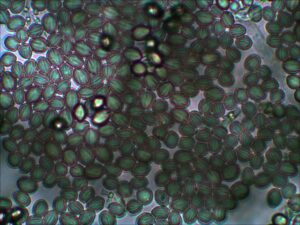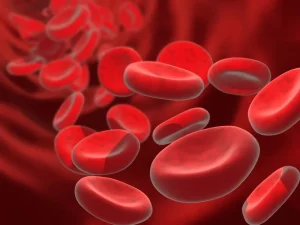Clogged tear ducts are typically caused by small or underdeveloped tear ducts in infants. Tear ducts are helpful for all humans in keeping eyes moist and flushing out potentially harmful materials, like dust, bacteria, and viruses. Eye infection and damage occur more frequently when the cornea is allowed to dry out. So, functioning tear ducts can be vital to our overall health.
Symptoms of Blocked Tear Ducts
- Watery eyes
- Excessive tearing, even when the baby isn’t crying
- The eye is not red & eyelid is not swollen
- Swelling on one or both inner eyes
- Pus in corner of the eye
- Crust over the eyelid or in eyelashes
Clogged tear ducts are relatively common, occurring in as many as 1/3 of infants. Symptoms typically become noticed in infants between one and two months of age. Clogged tear ducts are caused by an underdeveloped tear duct, a narrow tear duct, or blockage by tissue or other materials, though they often clear up by the age of one. However, about 10% of clogged tear duct cases will require treatment.
Other causes of clogged tear ducts include growths in the nasal passage or severe injuries to the eyes and/or nose. In these cases, your infant may require treatment.
Dacryocystitis
Clogged tear ducts can lead to an infection called dacryocystitis. Symptoms can include red inner corners of the eyes and tenderness and swelling on the sides of the nose. Your pediatric healthcare provider should closely monitor any infections. They may prescribe topical antibiotics or antibiotic eye drops, and recommend massaging the site of the infection. Severe infections are treated in the hospital with IV antibiotics. In some cases, your infant or child may require surgery to open and drain the duct.
Treating Clogged Tear Ducts
Treat clogged tear ducts at home with daily massages.
Begin by thoroughly washing your hands. Gently press an index finger at the side of your kid’s nose. Massage down the length of the nose to the bottom corner. Apply warm compresses to the eye and nose to soothe and drain the area.
Many of our moms like to use breast milk to help break up the clogged duct. Although the AAP doesn’t recommend breast milk in the eyes, many of our families find that it helps. Folk medicine often does not have a scientific basis, however, you can always use your own discretion to support your kid’s health.
While this condition is not something to panic over, it is always important that you mention any symptoms to your pediatric healthcare provider. This way they can help you to monitor your infant’s condition and offer helpful tips. Also, your provider may choose to prescribe topical antibiotics or antibiotic eye drops if an infection is present.
Finally, for questions or comments, respond to this blog or contact us.







